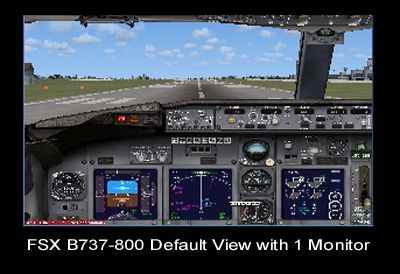Mac Zip Into Multiple Files
Compress a file or folder: Control-click it or tap it using two fingers, then choose Compress from the shortcut menu. If you compress a single item, the compressed file has the name of the original item with the.zip extension. If you compress multiple items at once, the compressed file is called Archive.zip. Instead of using ls and grep and zip's -@, you can use shell globs to select files directly on the zip command line e.g. Zip files.zip file. or zip images.zip.jpg. Also, when using a list of filenames from a file, you can use redirection instead of invoking a separate cat process, zip files.zip -@ zip.lst – steeldriver May 25 '16 at 0:28. Use the -s switch on the zip command in terminal. So if your folder was called FolderName. Zip -r -s 64 archive.zip FolderName/. 64 is the size of the split (in this case 64Mb). Use -s to set the split size and create a split archive. The size is given as a number followed optionally by one of k (kB), m (MB), g (GB), or t (TB) (the default is m).
- Mac Zip Into Multiple Files Using
- How Do You Cut And Paste Files From One Folder To Another?
- Mac Zip To Multiple Files
- Zip Multiple Folders Into Separate Files Mac
You can manually zip and attach documents and other files to your email message using WinZip® Courier before sending it. First, open a new Outlook email message as you usually would. When you are ready to zip and attach a file or files, do the following:

Outlook 2007/2010/2013/2016

Mac Zip Into Multiple Files Using
- If you want to encrypt the files that you will be zipping, click on the Encrypt button on the Message tab first to toggle it on. Please read about Using Encryption.
- Click on Attach File (Zipped) on the Insert or Message tab in the ribbon.
- In the resulting window, select the file(s) you want to attach. To select more than one file, hold down the Ctrl key while clicking on the files.
- Specify the compression type by choosing Zip: Legacy or Zipx: Best method, depending on what Zip file utility your recipients have; please read about compression methods for further information.
- For the filename of the Zip file, you can select an automatic Date-based name or File or Folder name or select Use this name to enter your own filename:
- Date-based name: a name consisting of the two characters 'WZ', the two-digit month, the two-digit day, and a two-digit index number. For example, an attachment created on February 4th might be named WZ020400.ZIP.
- File or folder name: this choice bases the Zip name on the name of the file(s) you select.
- If you have selected one file, the Zip file will have the same 'base' name as the file, with the file name extension changed to 'zip' or 'zipx' based on the compression method chosen. For example, if the selected file is named 'Field Notes.Doc' and legacy compression is chosen, the Zip file would be named 'Field Notes.zip'.
- If you select multiple files, the Zip file will have the name of the containing folder plus 'zip' or 'zipx' based on the compression method chosen. For example, if the selected files are located in a folder named 'Research' and best method compression was chosen, the Zip file would be named 'Research.zipx'.
- Use this name: this choice allows you to specify the Zip name. Simply type it into the edit field.
NOTE: The default extension used in the name given to the Zip file is 'zip' or 'zipx' depending on the compression method selected. However, this can be changed by setting and enabling the 'Use custom file extension' field in the Attachments Options dialog.
- Click OK to zip the file(s) into an attachment. If you has toggled on Encrypt, you will be asked for a password; then a Zip file will be created and attached to the e-mail message.
Outlook 2003

How Do You Cut And Paste Files From One Folder To Another?
- Either open the Insert menu and click File (Zipped) or click the Select Files and Insert as Zipped Attachment toolbar button .
- In the resulting window, select the file(s) you want to attach. To select more than one file, hold down the Ctrl key while clicking on the files.
- If you want to encrypt the files that you are zipping, check the box labeled Encrypt (please read about Using Encryption).
- Specify the compression type by choosing Zip: Legacy or Zipx: Best method, depending on what Zip file utility your recipients have; please read about compression methods for further information.
- For the filename of the Zip file, you can select an automatic Date-based name or File or Folder name or select Use this name to enter your own filename:
- Date-based name: a name consisting of the two characters 'WZ', the two-digit month, the two-digit day, and a two-digit index number. For example, an attachment created on February 4th might be named WZ020400.ZIP.
- File or folder name: this choice bases the Zip name on the name of the file(s) you select.
- If you have selected one file, the Zip file will have the same 'base' name as the file, with the file name extension changed to 'zip' or 'zipx' based on the compression method chosen. For example, if the selected file is named 'Field Notes.Doc' and legacy compression is chosen, the Zip file would be named 'Field Notes.zip'.
- If you select multiple files, the Zip file will have the name of the containing folder plus 'zip' or 'zipx' based on the compression method chosen. For example, if the selected files are located in a folder named 'Research' and best method compression was chosen, the Zip file would be named 'Research.zipx'.
- Use this name: this choice allows you to specify the Zip name. Simply type it into the edit field.
NOTE: The default extension used in the name given to the Zip file is 'zip' or 'zipx' depending on the compression method selected. However, this can be changed by setting and enabling the 'Use custom file extension' field in the Attachments Options dialog.
- Click OK to zip the file(s) into an attachment. If you checked Encrypt, you will be asked for a password; then a Zip file will be created and attached to the e-mail message.
Mac Zip To Multiple Files
WinZip Courier Help Navigation
Zip Multiple Folders Into Separate Files Mac
| Manage | WinZip Standard | WinZip Pro | Windows Compressed Folders |
| Access all your files from your PC, network, Windows HomeGroup and supported cloud services via the Places list | Limited | ||
| NEW! Quickly access your frequently used local, network, and cloud folders in Frequent Folders | Requires special drivers for cloud | ||
| NEW! Create folders on your PC, network or cloud service from WinZip | Requires special drivers for cloud | ||
| NEW! Securely delete files and folders with the new Wipe feature | |||
| NEW! Restore accidentally deleted, copied, moved or renamed files | |||
| NEW! Open a file from the cloud in the correct application, or in an alternate application | |||
| NEW! Open and edit a file in the default application or an alternate one | |||
| NEW! View property info for files and folders | |||
| NEW! Map a folder or network location to a drive | Limited | ||
| NEW! Copy, move, delete and multi-file rename files | No multi-file rename | ||
| NEW! Copy a path to the clipboard | |||
| NEW! Copy a cloud link to the clipboard | |||
| NEW! View thumbnail previews of a selected file, whether it is in your zip, on your PC, network or cloud service (if the cloud service supports thumbnails) | Local or network only | ||
| NEW! Preview the contents of images and documents, rotate and resize images, save an image as a background and share previewed files by email, IM or social media | |||
| Includes WinZip Express for Explorer, Office and Photos built-in, and WinZip Express for Outlook as a free download | |||
| Maximize display space on devices with auto-hide scroll bars that disappear when not needed | |||
| Place a file in a zip without leaving a copy on your system with the Move option | |||
| Easily browse and find files in your zip with new Thumbnails | |||
| Customize WinZip more easily with redesigned configurable settings | |||
| Browse all your local, network and cloud files more easily in the Files Pane | |||
| See the right tools for the task with the dynamic, slide-in Actions pane, which changes to display different features depending on your choices | |||
| Easily change the interface to Manage mode when you want to quickly access file management features, and see details like file type, size and date | |||
| Use WinZip on any touch-enabled device or computer | |||
| Use WinZip on new 2-in-1 computers. The display automatically adjusts when you switch between tablet and laptop modes | |||
| Rotate, Resize and View full-size images directly from within a Zip file | |||
| Temporarily extract Zip files using the 'Unzip and Try' feature and delete any files you do not need | |||
| Extract to selectable folder location or current folder location | |||
| Zip only the files you want using Include and Exclude filters | |||
| Use WinZip's Explorer View to display image thumbnails for easy browsing |